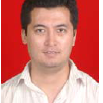International Journal of Information Engineering and Electronic Business (IJIEEB)
IJIEEB Vol. 3, No. 2, 8 Mar. 2011
Cover page and Table of Contents: PDF (size: 229KB)
Dynamic Passenger OD Distribution and System Performance of Taxi Operation System
Full Text (PDF, 229KB), PP.56-63
Views: 0 Downloads: 0
Author(s)
Index Terms
Taxi operation system, system performance, simulation, dynamic passenger OD distribution
Abstract
The complexity of taxi operation system grows out of the inherent dynamics and randomness of taxi services. In this paper, we consider a taxi operation system to be a special structure queuing system, and present a simulation model of cruising taxi operation system. It is supposed that vacant taxis cruise in the city to search for passengers, and their search strategies are based on drivers’ experience and available information. With a given OD distribution, the dynamic features of the taxis’ 24-hour available service can be recurred. Through a simulation experiment, it is shown that considering the time-variant effect can help to get more accurate information about taxi services. A new method of determining the system optimal taxi fleet size is developed. These are helpful to taxi supervisor for regulating urban taxi operation system more efficiently and taxi drivers for providing better service.
Cite This Paper
Chen Mu, XiangMo Zhao, "Dynamic Passenger OD Distribution and System Performance of Taxi Operation System", International Journal of Information Engineering and Electronic Business(IJIEEB), vol.3, no.2, pp.56-63, 2011. DOI:10.5815/ijieeb.2011.02.08
Reference
[1]J. Xu, S.C.Wong,Hai Yang and Chung-On Tong, “Modeling level of urban taxi services using neural network”, Journal of Transportation Engineering, 1999, vol.125, pp.216-223.
[2]C.F. Manski and J.D.Wrigth, “Nature of equilibrium in the market for taxi services’, Transportation Research Record ,1976, vol. 619, pp.11–15.
[3]C. Shreiber, “The economic reasons for price and entry regulation of taxicabs: Rejoinder”, Journal of Transport Economics and Policy, 1977, vol.11, pp. 198–204.
[4]M. E.Beesley and Glaister S, “Information for regulating: the case of taxis”, The Economic Journal, 1983, vol.93,pp. 594—615.
[5]R.D. Cairns and C. Liston-Heyes, “Competition and regulation in the taxi industry”, Journal of Public Economics, 1996, vol.59(1), pp.1—15.
[6]J. Fernandez, D. Joaquin and M. Briones, “A Diagrammatic analysis of the market for cruising taxis”, Transportation Research Part E, 2006, vol.42, pp.498—526.
[7]G. W. Douglas, “Price regulation and optimal service standards: the taxicab industry,” Journal of Transport Economics and Policy, 1972, vol.20, pp.116-127.
[8]H.Mohring, “Optimization and scale economies in urban bus transportation”, American Economic Review, 1972, vol. 62, pp. 591-604.
[9]L.Kleinrock, “Queueing systems volume I: theory”, Canada: A Wiley-Inter science publication,1976, pp. 89-108.
[10]H.Yang and S.C.Wong, “A net work model of urban taxi services,” Transportation Research B, 1998, vol.32, pp.235-246.
[11]K.I.Wong, S.C.Wong and H.Yang, “Modeling urban taxi services in congested networks with elastic demand,” Transportation Research B, 2001, vol.35, pp. 819-842.
[12]H. Yang, M. Ye, W. H.Tang and S.C.Wong, “Regulating taxi services in the presence of congestion externality”, Transportation Research Part A, 2005, vol.39(1),pp. 17—40.
[13]K.I.Wong, S.C.Wong, H. Yang, J.H.Wu, “Modeling urban taxi services with multiple user classes and vehicle modes”, Transportation Research B, 2008,vol.42(10),pp.985-1007.
[14]X. Zhou and B. Fan, “ Study on dynamic path travel time”, Journal of University of Shanghai for Science and Technology, in Chinese, 1999, vol.21, pp.385-388(in Chinese).
[15]C.C. Deng, H. L.Ong, B.W.Ang and T.N.Goh. “A modeling study of a taxi service operation”,International Journal of Operations and Production Management. 1992, vol.12,pp:65-78.

